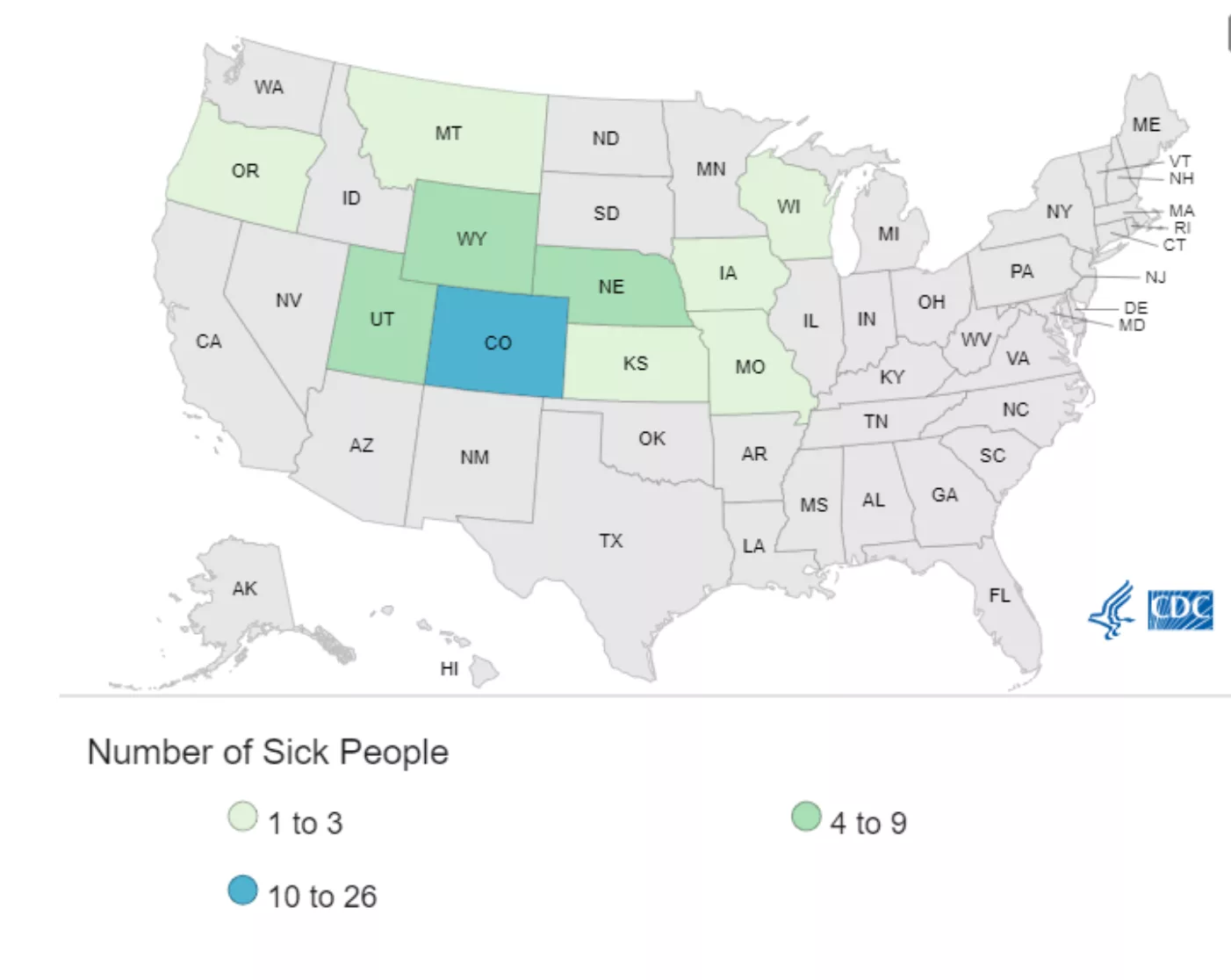
Infections so far led to one death in Colorado and 10 hospitalizations, three of those in the Omaha metro area
OMAHA — A multistate outbreak of E. coli so far has led to one death and 10 hospitalizations — with three of the people hospitalized reportedly from the Omaha metro area. The source has been linked to McDonald’s Quarter Pounder hamburgers and onions.
In all, the outbreak has included 49 cases of Shiga toxin-producing E. coli (STEC) in 10 states.
STEC can be spread through undercooked meat, raw milk, unpasteurized juices, contaminated water, and fruits and vegetables that have been contaminated with feces, said the Nebraska Department of Health and Human Services.
Federal officials have said that most of the ill people were in Colorado and Nebraska.
Twenty-six cases — including an older person with underlying conditions who died — were reported in Colorado.
Of the nine cases in Nebraska, area health departments said all but one occurred in Douglas and Sarpy Counties — the Omaha metropolitan area. Locally, those affected range in age from 22 to 75 years old.
“There are likely more cases that haven’t been identified yet,” said Justin Frederick, deputy director of the Douglas County Health Department. “We urge the public to contact their health care provider if they are experiencing symptoms and are concerned about a potential exposure.”
Removed from the menu
Other states reporting infections between Sept. 27 and Oct. 11 included Iowa, Kansas, Missouri, Montana, Oregon, Utah, Wisconsin and Wyoming.
E. coli symptoms include diarrhea, severe stomach cramps, vomiting or a low fever and signs of dehydration, according to the Douglas County Health Department. Blood and urine may be present in stools. If someone is suffering from the symptoms for more than two days, health officials recommend contacting a doctor immediately.
State and county health officials in Nebraska say they are working closely with the U.S. Centers for Disease Control and Prevention, the U.S. Department of Agriculture Food Safety and Inspection Service and the Food and Drug Administration (FDA) to communicate with patients and identify other potential cases.
The CDC is not advising against eating McDonald’s food, however, saying that potentially contaminated items have been removed from the menu in affected states.
A statement from McDonald’s said that out of “an abundance of caution,” it is temporarily removing the Quarter Pounder from restaurants in the impacted area that includes Colorado, Kansas, Utah and Wyoming as well as portions of Idaho, Iowa, Missouri, Montana, Nebraska, Nevada, New Mexico and Oklahoma.
“We take food safety extremely seriously and it’s the right thing to do,” said the statement from Cesar Piña, the fast food restaurant’s North America chief supply chain officer.
McDonald’s said that initial findings indicate that a subset of illnesses may be linked to slivered onions used in the Quarter Pounder and sourced by a single supplier that serves three distribution centers.
It said local restaurants have been instructed to remove that product from their supply and that McDonald’s has paused the distribution of all slivered onions in the impacted area.
USDA is also looking into the beef patties on the Quarter Pounder hamburgers, Colorado officials reported.
McDonald’s said it was working with suppliers to replenish supply for the Quarter Pounder in the coming weeks. It said that other menu items are unaffected and available.
Infections likely higher than reported
After being exposed to STEC, symptoms usually occur after three to four days but could take as little as one day and as long as 10 days, Nebraska health officials said.
STEC infections can make individuals of all ages sick. In some cases, especially in young kids, older adults or people with weakened immune systems, STEC can cause a serious condition called hemolytic uremic syndrome (HUS), which can lead to kidney failure and other health problems, including death.
One of the persons infected in the outbreak developed hemolytic uremic syndrome. Symptoms include little or no urination, losing pink color in cheeks and inside the lower eyelids, unexplained bruising or rash of tiny red spots, blood in urine and decreased alertness.
The CDC said that the true number of sick people in the outbreak is likely much higher than the number reported, and the outbreak may not be limited to the states with known illnesses. The federal agency said that’s because many people recover without medical care and are not tested for E. coli.
In addition, recent illnesses may not yet be reported as it usually takes 3 to 4 weeks to determine if a sick person is part of an outbreak.
More information can be found on the CDC’s website.
Nebraska Examiner, a States Newsroom affiliate, produced this story.




